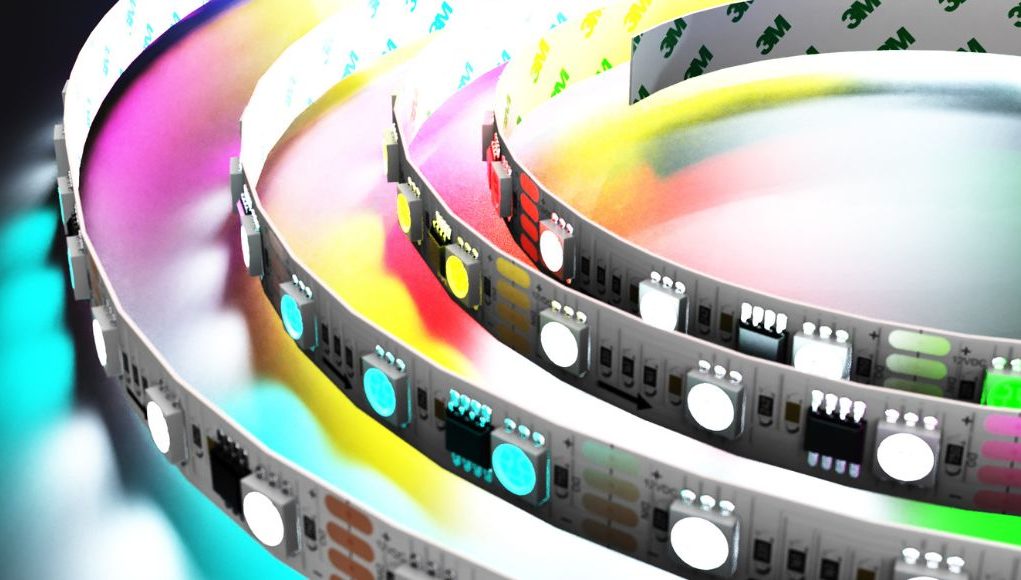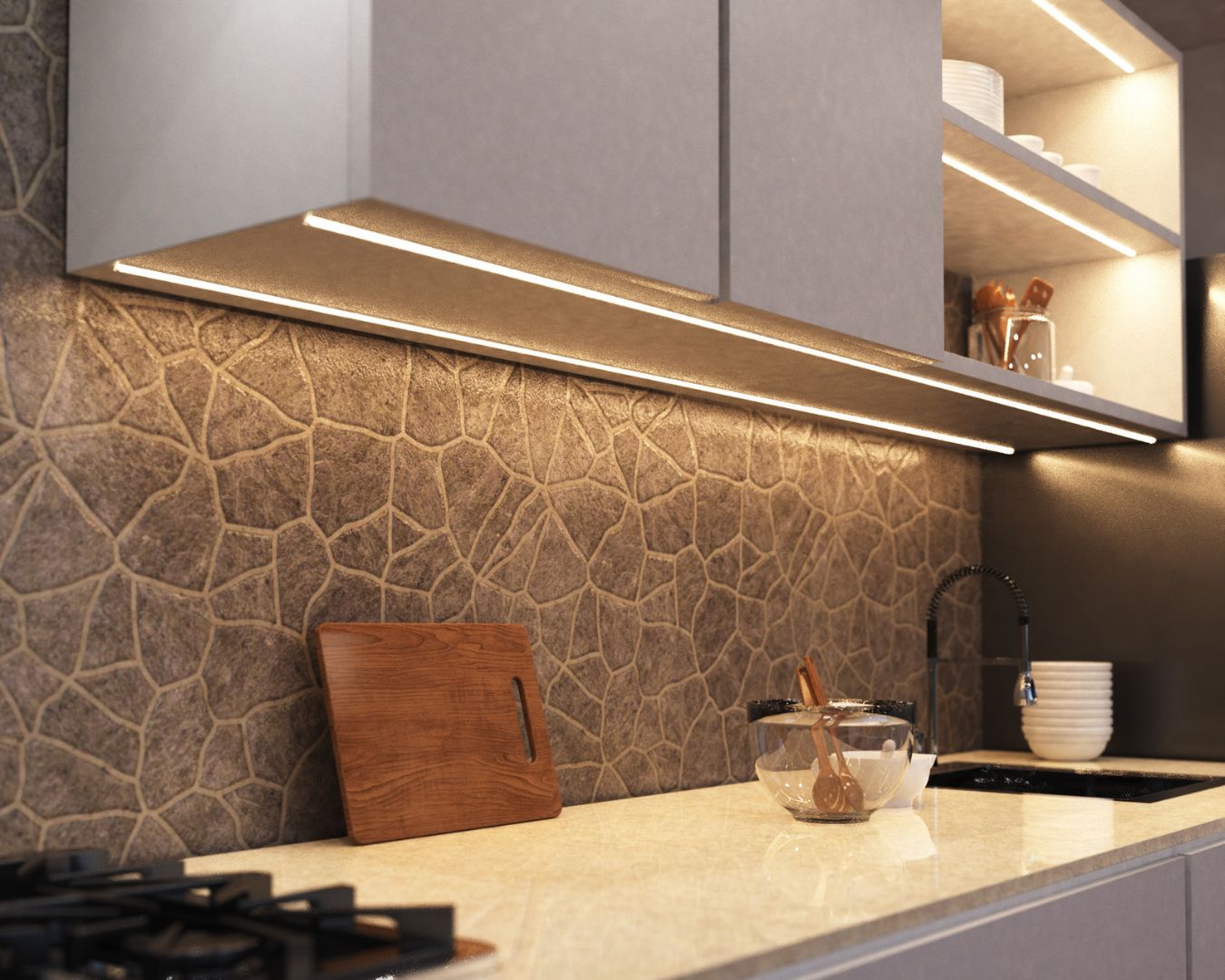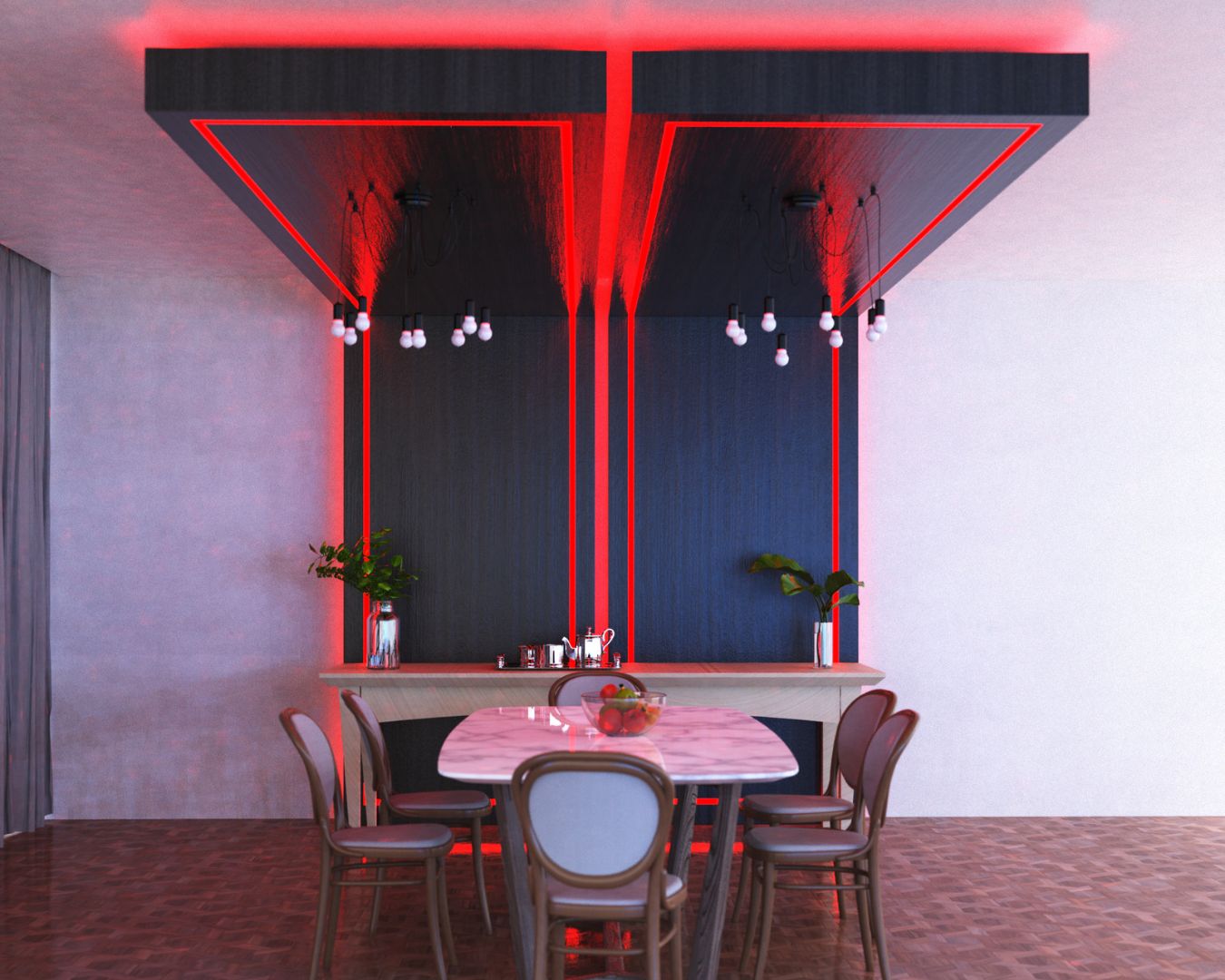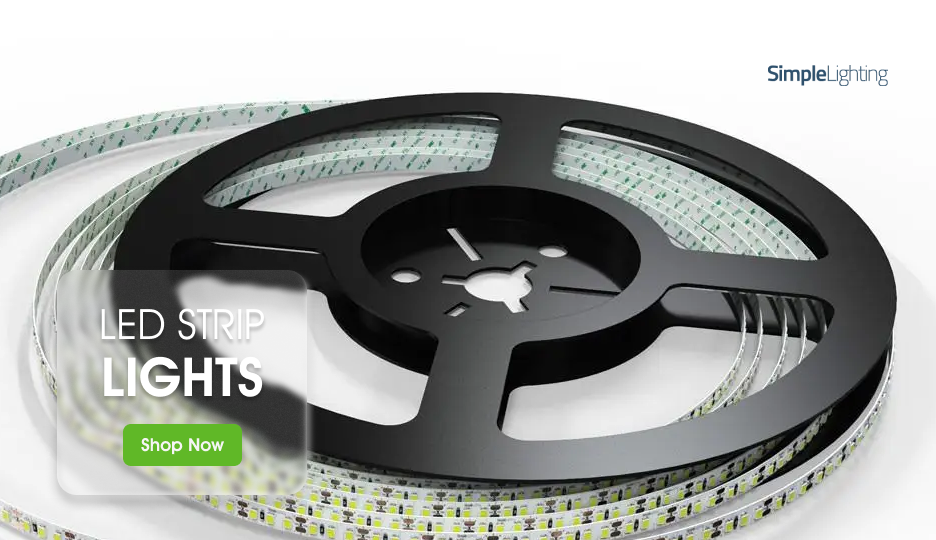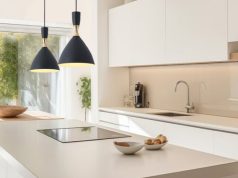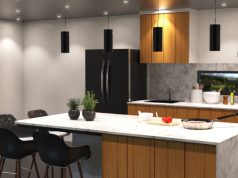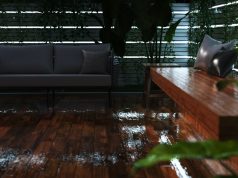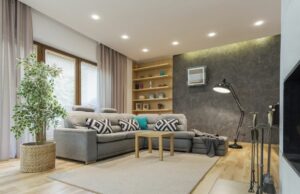What do you use your lights for?
Brightness? Sure. But it’s more than that. It’s about atmosphere, design, and influencing how a space feels and the way it’s perceived.
Modern LED technology has taken this to the next level, giving us the ability to choose the right colour type and temperature to transform our homes completely.
And the best lighting choice for this? LED strip lights. They make all the difference.
Use them for colour-changing effects behind the TV, create a calming bedroom retreat, or illuminate your kitchen counters with crisp task lighting.
But here’s the catch: With terms like RGB, RGBW, and Tunable White floating around, it’s easy to feel overwhelmed.
What do they actually mean? How do colour temperature and LED “channels” affect your lighting setup? Which one is better, RGB or RGBW?
In this guide, we’ll break down everything you need to know about your LED strip lights.
By the end of this post. You should be able to choose the right colour type, temperature, and configuration to match your space, mood, and lighting goals.
Ready to be an LED strip wiz? Let’s dive in.
Understanding LED Colour Types
LED strip lights come in several colour options, each designed for specific purposes. Understanding these differences helps you select the best lighting type for your space.
Aiming for a relaxing living space, a modern kitchen, or a vibrant entertainment zone?
Discover these four main types to make an educated decision:
1. Single-Colour LED Strips
Single-colour LED strips emit one consistent colour of light, such as warm white, cool white, or even a bold shade like blue or red.
These are ideal for applications where you want a clean, steady tone. There are no colour changes or fancy effects.
Where to use them:
- Under kitchen cabinets for focused, functional light.
- Along staircases or hallways for safe, subtle illumination.
- Behind mirrors or shelves to highlight architectural details.
They’re simple, affordable, and easy to install. They’re perfect for those who want reliable lighting without complex controls.
2. RGB LED Strips (Red, Green, Blue)
RGB LED strips feature three diodes: red, green, and blue, hence the RGB. These diodes combine to produce millions of colours for you to choose from.
You can shift from a soothing blue glow to a lively purple or festive red with the tap of a button or through a smart app.
These are best for:
- Living rooms or bedrooms for setting different moods.
- Gaming setups or entertainment zones for dynamic and immersive backlighting.
- Parties and special events where you want fun, colourful effects.
RGB strips are all about flexibility and fun.
However, since they don’t include dedicated white LEDs, their “white” tones are usually mixed from colours, which results in a slightly tinted hue rather than pure white.
This is where RGBW comes in.
3. RGBW LED Strips (Red, Green, Blue, White)
The “evolution” of the RGB technology, where a dedicated white diode is added to the strip.
With this, you get true white light plus all the colour-changing possibilities of RGB.
It’s basically RGB 2.0.
You can create vibrant scenes for social gatherings and switch back to clean white for reading or working, all from the same strip.
These are perfect for:
- Multi-purpose rooms like open-plan living areas.
- Homes that need both functional lighting and decorative effects.
- Smart home systems that use scene-based lighting (e.g., “Dinner Mode,” “Movie Mode”).
RGBW offers the best of both worlds: rich colour and practical illumination. These make it one of the most versatile options available.
4. Tunable White LED Strips (CCT Adjustable)
Some LED strips let you adjust between warm white, natural white, and cool white tones. This usually ranges from 2700K to 6500K. (We’ll explain what this means later on.)
So, instead of changing colours, you control the temperature of white light to suit your mood or time of day.
For example, you can have soft, amber lighting in the evening for winding down after a long day, and crisp, daylight tones for focusing during work hours.
And that’s all with one strip. There’s no need to install multiple strips or other fixtures.
These are great for:
- Home offices or studios that require adaptable lighting solutions.
- Bathrooms and kitchens where natural tones are essential.
- Living areas that are designed around circadian rhythm lighting (supports natural sleep-wake cycles).
What is Colour Temperature?
Light can affect the way you perceive a room. Changing your light can alter the mood and function of a space.
Colour temperature describes the tone of white light, measured in Kelvin (K). It’s what makes light feel “warm” and cosy or “cool” and bright.
Understanding this concept can help you match lighting to your desired mood or function.
There are three classifications of colour temperature.
Let’s break each one down:
Warm White (2700K–3000K)
Warm white emits a soft, amber glow similar to traditional incandescent bulbs. It creates a welcoming and relaxed atmosphere that is perfect for spaces where comfort matters most.
We’re talking:
- Living rooms and bedrooms
- Dining areas and lounges
- Hotels or hospitality environments (for commercial use)
Effect: Encourages relaxation and warmth. Great for winding down after a long day.
Neutral/Natural White (4000K)
The middle ground between warm and cool light. Neutral white offers a balanced, clean tone without yellow or blue tints.
It’s often used in modern kitchens, bathrooms, and offices where clarity and visibility are important.
Ideal for:
- Kitchens and utility rooms
- Workspaces and studies
- Retail environments
Effect: Ideal for general illumination and true-to-colour rendering.
Cool White (5000K–6500K)
Cool white delivers a crisp, bright light that mimics daylight.
It enhances concentration and visibility, making it a favourite for commercial spaces, garages, and outdoor areas.
This tone also creates an energetic and joyful atmosphere that’s great for parties and gatherings.
This tone of light is ideal for:
- Task lighting and workbenches
- Outdoor lighting and signage
- Bathrooms or dressing areas
Effect: Energising and functional. It promotes focus and alertness.
Understanding LED Channel Configurations
Channel configuration…what’s that? This refers to the number of separate “control paths” an LED strip light has.
Channels determine what colours or tones you can control and how they’re mixed.
Single-Channel LEDs
“One team, one dream.”
Single-channel strips have one output—meaning all LEDs change together. They can only produce one colour (e.g., warm white or cool white) and can be dimmed as a whole.
Some Pros:
- Simple to install and use
- Cost-effective
- Ideal for straightforward lighting applications
Cons:
- Limited to a single colour or a pre-set white colour temperature, with no colour mixing.
Use case example: A single-channel warm white strip under a kitchen cabinet provides uniform illumination controlled by a simple dimmer.
Dual-Channel LEDs (Tunable White)
These kinds of strips feature two channels, typically one for warm white and one for cool white.
By mixing these, you can achieve any colour temperature in between.
Advantages:
- Adjustable warmth and brightness
- Suits circadian lighting systems
- Smooth transitions from day to night light
Use case example: Tunable white strips in a living room can shift from bright 5000K daylight for cleaning to soft 2700K evening tones for relaxation.
RGB & RGBW Channels
Another noticeable difference between the two is that RGB strips use three channels (red, green, blue), whereas RGBW strips use four channels (red, green, blue, white).
Each channel controls its respective LED colour.
Combining different intensities gives you access to millions of different colours or a mix of colour and white in RGBW setups.
Advantages:
- Full colour customisation
- Works with advanced controllers or smart systems
- Ideal for decorative and mood lighting
Use case example: RGBW LED strips around a home theatre can glow deep blue during movie time and switch to bright white for cleaning afterwards.
Here are more detailed wiring instructions for you to follow:
- How to Wire Single Colour (2 Core LED Strips)
- How to Wire Single Colour (3 Core LED Strips)
- How to Wire RGB+W
How to Choose the Right LED Colour & Configuration
Now that you understand colour types, temperatures, and channels…how do you decide which LED strip is right for your project?
Here’s a simple step-by-step guide.
1. Match the Colour Type to the Room’s Purpose
Think about what you’ll be doing in the space. That’s going to dictate what colour you need.
Here are some ideas to get you started:
Living Room — (RGBW or Tunable White) For switching between cosy and bright scenes.
Kitchen — (Neutral or Cool White) You need good visibility for food prep and cleaning.
Bedroom — (Warm White or RGB) Calming and relaxing light or mood effects
Bathroom — (Neutral or Cool White) Clean, natural illumination.
Outdoors — (RGBW or Single-Colour Cool White) Durable, vibrant lighting effects
2. Consider Control Options
Modern LED strips work with a variety of control systems, from simple wall dimmers to fully automated smart lighting setups.
Options to consider:
- Manual dimmers: Basic brightness control for single-colour strips.
- Remote controls: Wireless adjustment of colours and brightness.
- Smart apps and/or voice assistants: Seamless integration with smart home systems, such as Alexa, Google Home, or other smart ecosystems for scene-setting and scheduling.
If you enjoy convenience and flexibility, RGBW or tunable white strips with smart controls provide the ultimate user experience.
You’ll never go wrong with those.
3. Design vs Function: Find Your Balance
Ask yourself: Do you want lighting for ambience or function? How about both?
For ambience: RGB or RGBW strips are perfect. Their colour-changing effects instantly create an atmosphere.
For function: Single-colour or tunable white strips provide consistent, practical illumination.
For both: RGBW delivers versatility, allowing you to move between work and relaxation effortlessly.
4. Don’t Forget Compatibility
Here’s a rule of thumb: Always make sure your chosen LED strip matches your power supply and controller.
Multi-channel strips (like RGBW) require compatible multi-channel controllers.
Simple Lighting offers kits and components designed to work seamlessly together, saving you time and ensuring safe, reliable operation.
Benefits of Proper LED Colour & Channel Choice
Hint: It’s not just about aesthetics.
Choosing the right combination of colour, temperature, and channel configuration has real-world benefits.
1. Enhanced Comfort & Productivity
Lighting affects mood, alertness, and overall well-being.
Cool tones can help you focus during work, while warm tones promote relaxation in the evening.
With tunable or multi-colour options, you can tailor your environment to your mood or activity.
2. Energy Efficiency
LED strips already consume far less energy than traditional lighting. When combined with dimming or smart controls, you can reduce consumption even more.
Efficiency leads to lower bills and a smaller carbon footprint.
3. Creative Design Flexibility
Having complete control over your lights gives you the freedom to do anything: Highlight architectural lines, illuminate coves or shelves, or add personality to spaces with vibrant hues.
RGB and RGBW strips can even create dynamic effects, such as fading, chasing, or strobing, for parties or events.
4. Future-Proof Smart Integration
Many LED strips now support smart home connectivity.
You can program your strips to react to the time of day, sync with music, or adjust automatically with circadian cycles.
RGBW and tunable white systems are especially adaptable, offering both practical and decorative options in just one setup.
Tying the Spectrum Together
LED strip lights can make all the difference in your home or commercial space lighting.
When you understand how colour types, temperatures, and channels work together, you can design lighting that truly enhances your home’s personality and comfort.
So, the next time you look at your strip lights, remember that they’re not just about brightness.
They’re about creating the perfect mood, function, and experience for your space.
Whether you’re creating a relaxing atmosphere or a bold visual feature, Simple Lighting’s full range of LED strip lights, controllers, and accessories provides an ideal lighting solution for your project.


